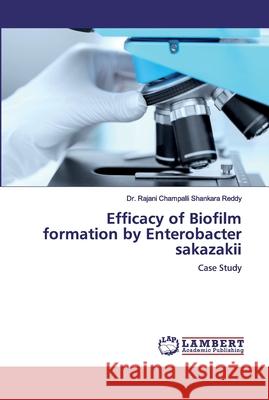Efficacy of Biofilm formation by Enterobacter sakazakii » książka
Efficacy of Biofilm formation by Enterobacter sakazakii
ISBN-13: 9786200316301 / Angielski / Miękka / 2019 / 100 str.
Enterobacter sakazakii (formerly known as Cronobacter sakazakii) is opportunistic pathogen that can cause necrotizing enterocolitis, bacteremia and meningitis, predominantly in neonates. It constitutes a potential health hazard particularly for the neonates and is now attracting considerable attention because of its varied clinical manifestations. Eleven isolates were confirmed as E. sakazakii. Confirmed isolates were further tested for virulent characteristics such as hemolysis activity, haemagglutination and DNase production and all the isolates showed positive reactions for these tests. E. sakazakii has been reported to form biofilms, but environmental conditions play vital role in attachment and formation of biofilm. In this study stainless steel coupons and enteral feeding tubes were used to check ability and efficacy of E. sakazakii for biofilm formation up to 10 days. E. sakazakii can be present both in dairy and environmental milieu and the feeding tubes used for the purpose of feeding to neonates can be a potential source of fatal infection of E. sakazakii.











